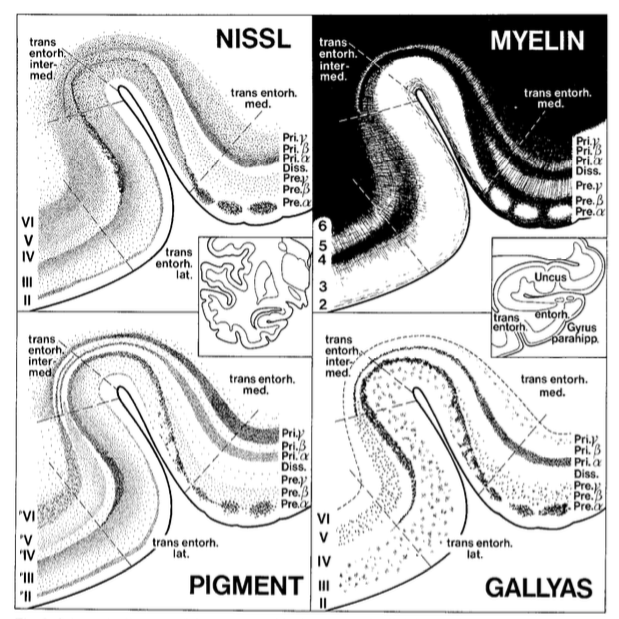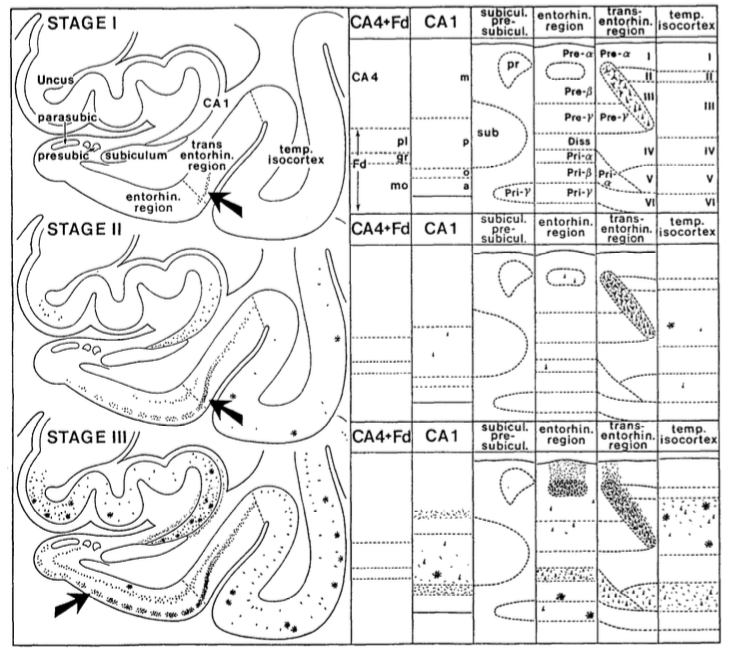
This question for this week's #SubfieldWednesday is:
Can you visualize subfields using in vivo magnetic resonance imaging (MRI)? (1/n)
Can you visualize subfields using in vivo magnetic resonance imaging (MRI)? (1/n)
Answer:
Yes, there are specific anatomical features in MRI that we can use to identify different hippocampal subfields (2/n)
#SubfieldWednesday
Yes, there are specific anatomical features in MRI that we can use to identify different hippocampal subfields (2/n)
#SubfieldWednesday
How is this possible? If subfields are defined based on cell types, cell size and density, layer thickness, etc.? Neuroanatomists typically define subfields based on special dyes that stain the cell bodies (e.g. Nissl stain as shown below) #SubfieldWednesday (3/n) 



Plus, these regions are really small (more on this later)!! #SubfieldWednesday (4/n) 



Using post-mortem histology and MRI in the same subjects confirms that we can see subfield-defining layers using MRI.
In particular, using T2-weighted MRI, we can see a "dark band" which corresponds to the "stratum radiatum lacunosum moleculare" layers #SubfieldWednesday (5/n)
In particular, using T2-weighted MRI, we can see a "dark band" which corresponds to the "stratum radiatum lacunosum moleculare" layers #SubfieldWednesday (5/n)

The dark band allows us to separate the stratum pyramidale (pyramidal cell layer) of the cornu ammonis (CA) regions from the granule cell layers of the dentate gyrus! (6/n) 

Other structures that are used to visualize the subfields in MRI include the alveus and fimbria/fornix, as well as the surrounding white matter and cerebral spinal fluid (CSF). #SubfieldWednesday (7/n) 

Next week we will return to the question of hippocampal subfield/layer size and the importance of MRI spatial resolution in subfield visualization and delineation! References for the screenshots are listed below. #SubfieldWednesday (8/n)
Amaral (1999) Introduction: what is where in the medial temporal lobe? Hippocampus, 9(1), 1-6.
Olsen, R. K., & Robin, J. (2020). Zooming in and zooming out: the importance of precise anatomical characterization and broader network understanding of MRI data in human memory experiments. Current Opinion in Behavioral Sciences, 32, 57-64.
Kerchner, G. A., Deutsch, G. K., Zeineh, M., Dougherty, R. F., Saranathan, M., & Rutt, B. K. (2012). Hippocampal CA1 apical neuropil atrophy and memory performance in Alzheimer's disease. NeuroImage, 63(1), 194-202.
de Flores, R., Berron, D., Ding, S. L., Ittyerah, R., Pluta, J. B., Xie, L., ... & Wisse L. (2020). Characterization of hippocampal subfields using ex vivo MRI and histology data: Lessons for in vivo segmentation. Hippocampus, 30(6), 545-564.
Duvernoy, H. M. (2005). The human hippocampus: functional anatomy, vascularization and serial sections with MRI. Springer Science & Business Media.
Amaral, R. S., Park, M. T., ... & Chakravarty, M. M. (2018). Manual segmentation of the fornix, fimbria, and alveus on high-resolution 3T MRI: Application via fully-automated mapping of the human memory circuit white and grey matter in healthy and pathological aging. Neuroimage
@threadreaderapp unroll
• • •
Missing some Tweet in this thread? You can try to
force a refresh








